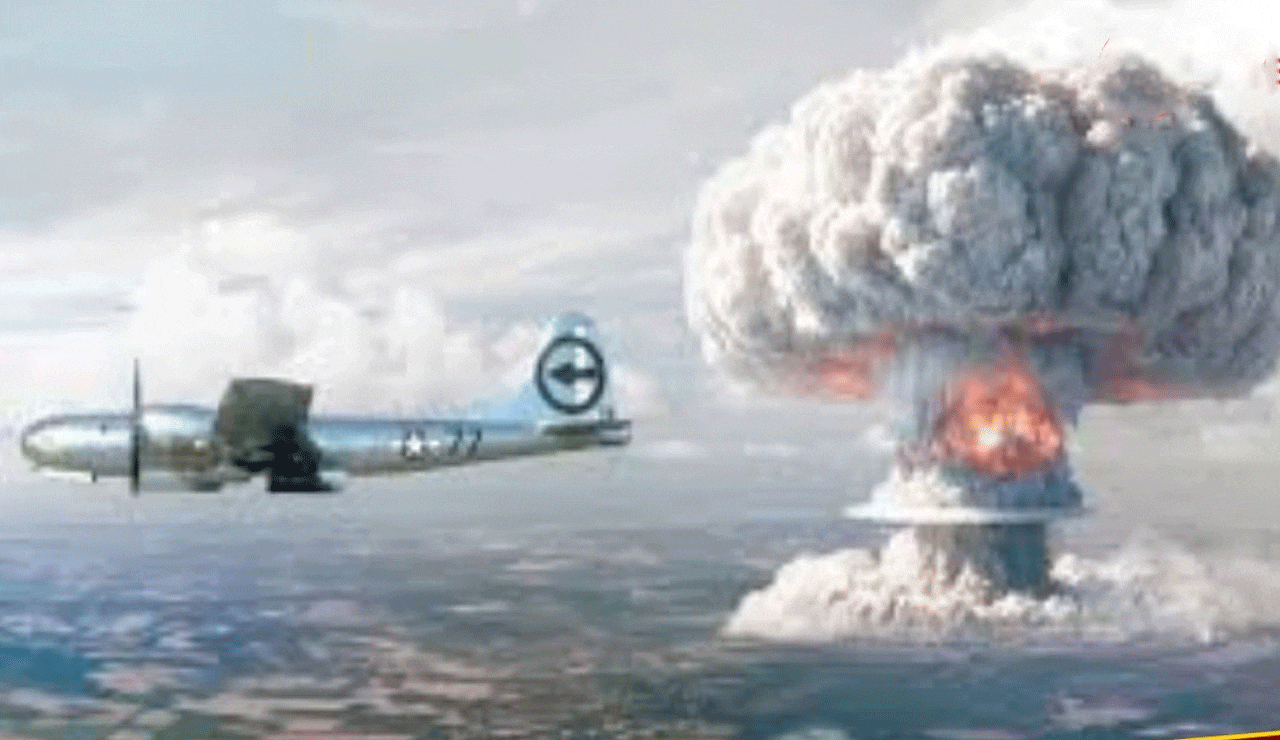What Is the Cost of a Nuclear Bomb, Where Are They Hidden, and Who Authorizes a Strike?
In August 1945, the United States dropped two atomic bombs — ‘Little Boy’ on Hiroshima and ‘Fat Man’ on Nagasaki, Japan.

In August 1945, the United States dropped two atomic bombs — ‘Little Boy’ on Hiroshima and ‘Fat Man’ on Nagasaki, Japan. These attacks resulted in over 125,000 to 250,000 deaths and caused catastrophic destruction, with long-term health and environmental effects that lasted for decades.
Table of Contents
Massive Spending on Nuclear Weapons Globally
According to recent data, nations around the world are spending approximately $91.4 billion annually on nuclear weapons maintenance. This breaks down to about $2,898 per second — a figure that surpasses the GDP of over 100 countries.
Pakistan’s Nuclear Arsenal and Capabilities
Pakistan maintains a powerful nuclear arsenal, with F-16 fighter jets stationed at Mushaf (Sargodha) and Shahbaz Air Bases. Nuclear warheads are believed to be stored at the Sargodha Weapons Storage Complex, just 10 km from the airbase.
Pakistan possesses missile systems such as:
- Abdali
- Shaheen
- Ghauri
- Hatf
The authority to launch a nuclear attack in Pakistan lies with the National Command Authority, chaired by the Prime Minister.
How Countries Authorize Nuclear Strikes
No nation allows a direct, unmonitored nuclear launch by a President or Prime Minister. Leaders have access to nuclear codes, but final launch authority involves multi-layered approvals from military and national security bodies.
For instance:
- The U.S. President carries a nuclear football, a briefcase containing war plans and launch options.
- Russia’s President has a similar briefcase known as the Cheget.
In India, decisions involve the Prime Minister, advised by the Cabinet Committee on Security, National Security Advisor (NSA), and Chief of Defence Staff (CDS).
India’s Nuclear Triad and Policy
India has developed a nuclear triad, capable of launching nuclear attacks from land, air, and sea. The country’s missile systems include:
- Agni
- Shaurya
- Pralay
- BrahMos
India follows a ‘No First Use’ (NFU) policy but assures a retaliatory strike in case of a nuclear attack.
Rise and Decline of Nuclear Warheads
During the Cold War, the world had nearly 60,000 nuclear warheads. Today, global disarmament efforts have reduced the count to around 12,500, held by nine countries:
| Country | Nuclear Warheads |
|---|---|
| Russia | 2,815 |
| United States | 1,928 |
| China | 410 |
| France | 290 |
| United Kingdom | 225 |
| India | 172 |
| Pakistan | 170 |
| Israel | ~90 |
| North Korea | ~30 |
South Africa is the only nation to voluntarily dismantle its nuclear arsenal, declaring itself nuclear-free.
Pakistan’s Nuclear Weapons Value
Pakistan’s nuclear arsenal is valued at approximately $445.5 billion. If it were to hypothetically sell these weapons, it could wipe out its national debt, currently estimated at $274 billion.
The Cost of Building a Nuclear Bomb
Creating a modern nuclear warhead costs between:
- $18 million (₹1,530 crore) to
- $53 million (₹4,516 crore).
When factoring in the delivery system, aircraft or missile, launch platforms, and maintenance, the cost of a fully operational nuclear weapon can reach up to $270 million (₹23,000 crore).
The Most Expensive U.S. Nuclear Bomb
According to a 1998 Federation of American Scientists report, the U.S. B61-12 nuclear bomb had a warhead cost of $28 million, but the full system (including aircraft, launching pad, and logistics) was worth approximately $270 million.
